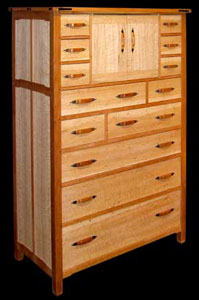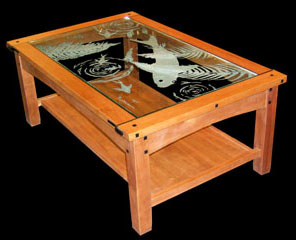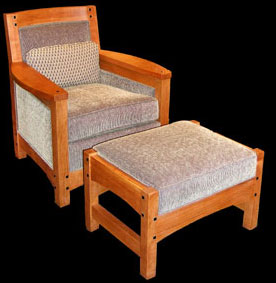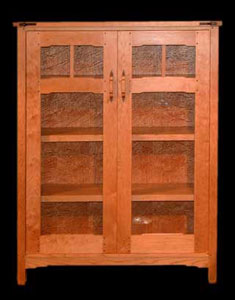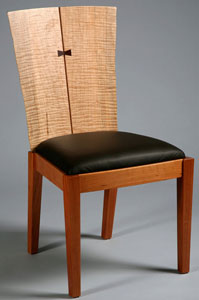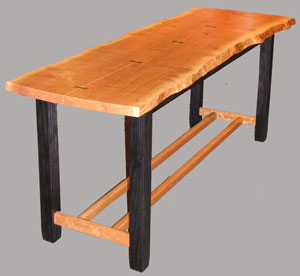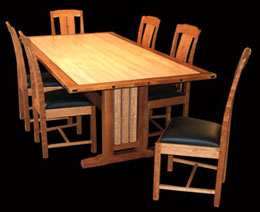
People go into woodworking for all sorts of reasons. There are practical DIYers building things they can’t afford to buy, hobby woodworkers wanting to fill time, and even people who are continuing a family legacy. Few people, though, choose their life’s career, as Pacific Northwest woodworker David Gray did, based on something sold in the want ads.
“I started woodworking in 1978 while I was working at the University of Washington,” David recounted. “The triggering event for me was the want ads. I liked to read them every day, and if I saw something I was interested in, I jumped in my car and went. One day I saw an ad from a man who was retiring and selling the hand tools from his life’s work. The problem was that he wouldn’t sell them to me unless I assured him I was going to use them. I promised, bought them, then enrolled in a cabinetmaking program at a local vocational college.
“I collaborated with a woodworker working in his basement, and we shared our tools in his shop. Eventually, we found a couple of other woodworkers and formed a co-op in Pioneer Square in Seattle in 1979. I quit my other job to be a full-time woodworker. At the time, Pioneer Square was not the posh tourist neighborhood it is today. Rents were fairly cheap and local restaurants were ethnic and interesting. We were paying 10 cents per square foot for a 3,600 square foot space.
“There was another woodworking shop on the second floor of a building nearby. They, and we, went to a meeting of a rather large group trying to form a local woodworking guild. Within a few meetings, it became clear that there were two distinct agendas with very little crossover. One half wanted the guild to support a retail outlet to sell their work, and the other half opposed that. As a result, the guild split down the middle.
“I went with the half that formed a store and gallery. About 30 of us pooled our money and opened a showroom for our work. It eventually came to be called NW Fine Woodworking. I am the current president of NW Fine Woodworking, and have been for about half the years of its existence.
“Before long, we hired a top-notch saleswoman who became the ‘Mom’ of the store. She took charge, organized things and started selling successfully. We thrived, but because our gallery was in the ground floor of another woodworking co-op, problems emerged, including security problems. We wanted to lock the store separately, but the coop was not willing to do that, so we moved.
“I started to get more and more successful and was a happy woodworker, but at some point, I decided to stray. I went to graduate school to become a therapist, and for about six years worked as a family therapist while still doing woodworking. After meeting my wife, we moved to Whidbey Island and I dedicated myself once again to full-time woodworking. There I hired employees and expanded; by 1999, I was in my own building.
“My work is somewhat eclectic,” David explained, “but a good bit of it is Craftsman style. The market was good for Craftsman work and it sold well, so I did a good bit of it. My first design in that style was a desk with bull’s-eye dovetails on the drawers, followed by a table and chair set. I’ve done some modern avant-garde furniture, but it has been more difficult to sell, though I am doing more of it these days. Presently, I’m leaning toward large, plank top, two-piece tables with butterfly cleats and live edge work.
“Part of the reason for that is that I love the wood, and always have. It brings its own gift to the process, so I am always looking for interesting wood that brings drama. I also favor combinations of woods, and those small details that provide contrast. I’m not locked into any particular style, but am fond of interesting joinery. Those hidden details provide a signature of the craftsman. Sometimes it is the design, sometimes the process and sometimes the wood itself, but I find myself being engaged and inspired again and again each year.”
A somewhat sadder note crept into our conversation toward the end, but even that David tempered with optimism. “These days,” David lamented, “I wonder if we are seeing the end of an era where one can make a living building studio furniture. To me, it seems to have begun during the arts and crafts resurgence of the mid-seventies. Lately, I’ve started to wonder if it will survive. Hopefully, a new emerging generation will develop the same appreciation, and willingness to work that hard to make a living, as we had.”
I suspect we all share that wish, and with people like David providing high quality inspiration, there’s plenty of reason to keep our hopes up.
